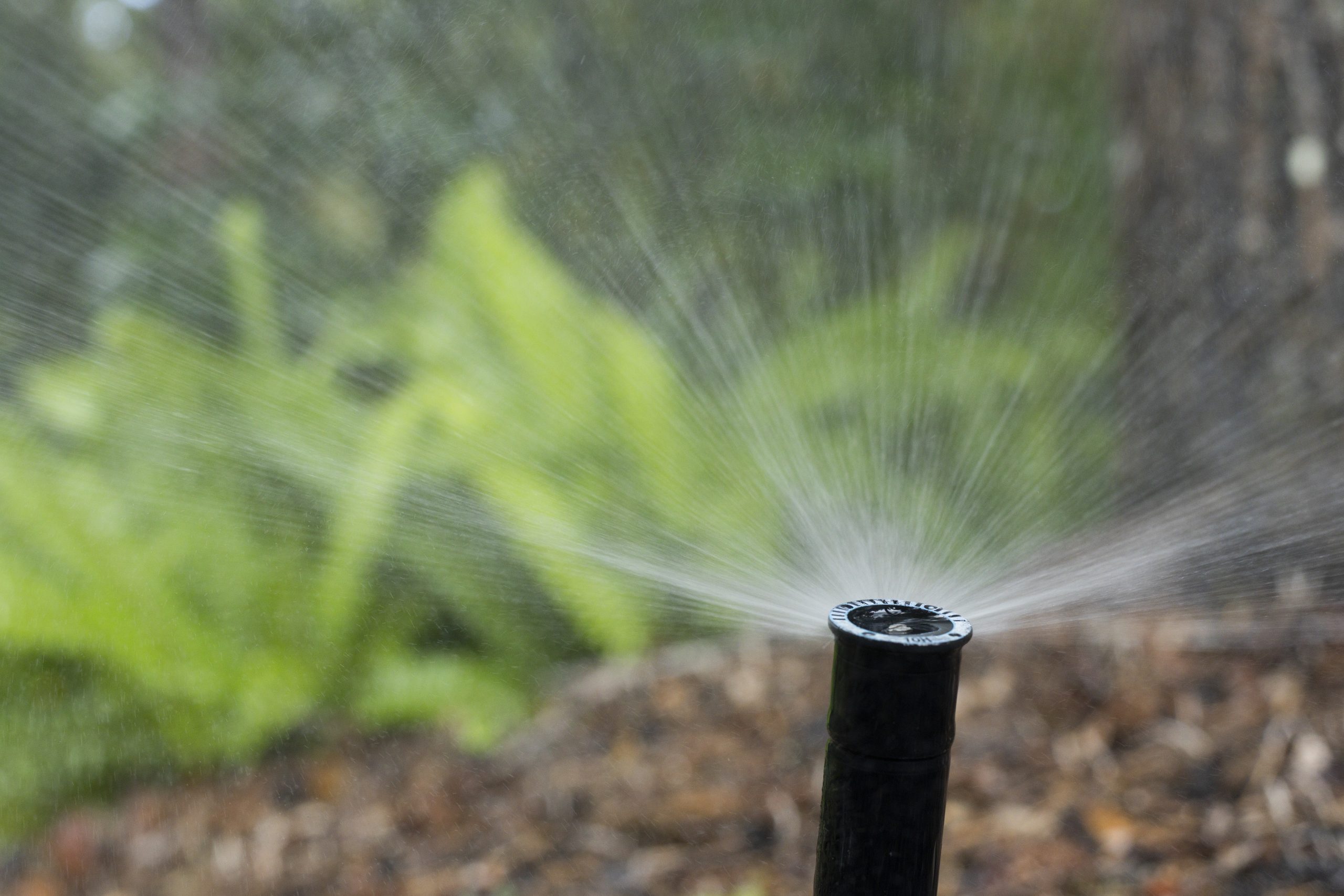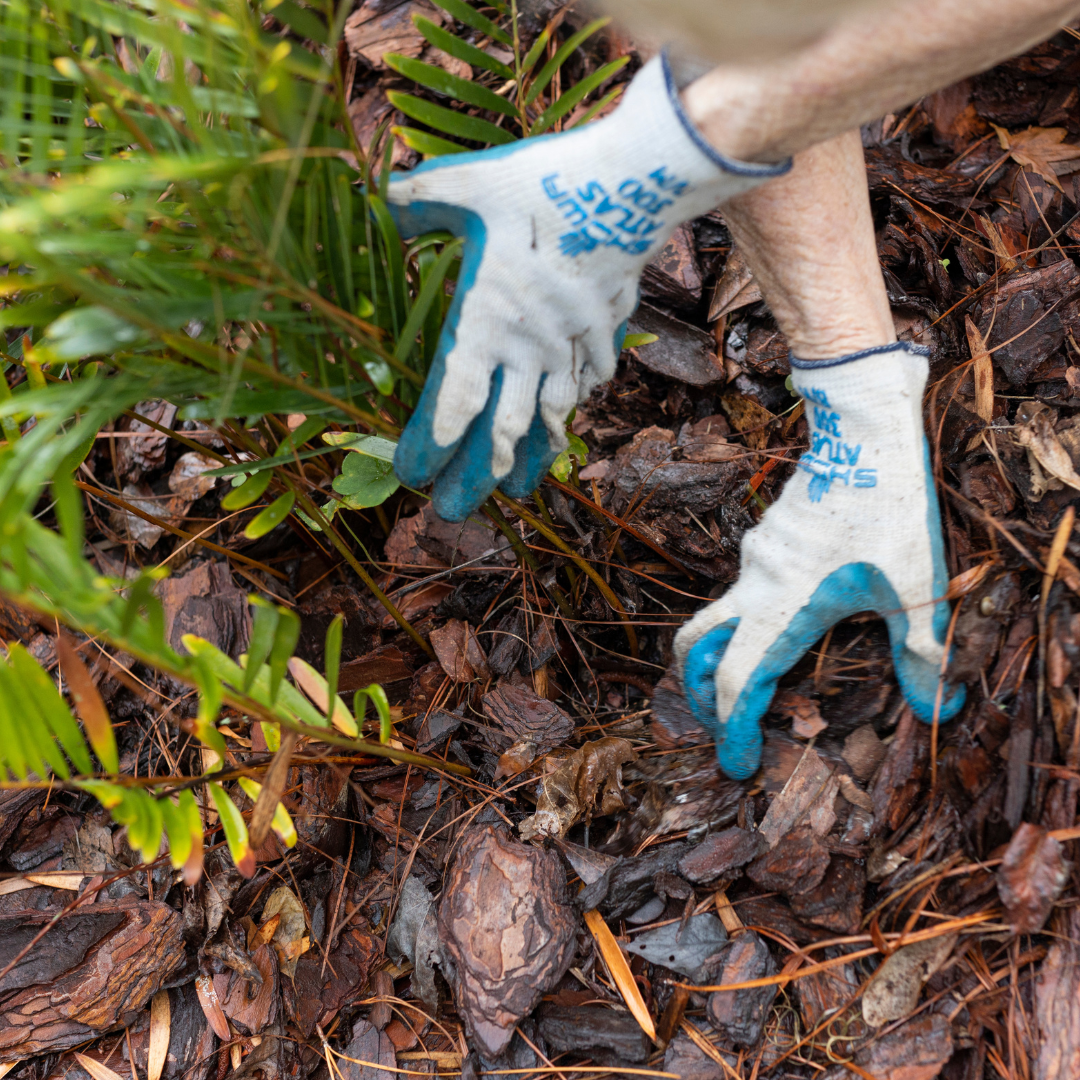Florida’s dry season can be a challenge for residential lawns and landscapes. The hot dry conditions can quickly deplete moisture from our sandy soils, leaving turf brown and landscape plants wilted. Because of these conditions, the dry season is typically the time of year when water demands for irrigation are at their highest. Below are some helpful tips for optimizing landscape health while minimizing water use during Florida’s dry season.
ALWAYS ACT LIKE THERE IS A DROUGHT
Plants respond and adapt to the conditions with which they are presented. When we go to the gym, the small amount of stress we place on our bodies helps us to get stronger over time. Similarly, by consistently treating our landscapes as if we are in a drought we help our plants and lawn “flex their muscles” making them stronger and better prepared to handle dry conditions when a drought actually occurs.

Sarasota County’s water restrictions limit irrigation to once per week. Watering your lawn once per week with 3/4 inches of water should be sufficient for maintaining established turf grass. To saturate the top 9 inches of typical sandy Florida soil,3/4 inches of water is required. By watering weekly to this depth you train your grass to grow deeper roots, increasing your lawn’s drought tolerance. On weeks with sufficient rainfall, you can skip your weekly scheduled irrigation. Although local water restrictions exempt residents who use reclaimed water for irrigation, this advice applies regardless of the source of irrigation water. Reclaimed water may contain residual salts present after the reclamation process. When irrigating too frequently in the absence of rain, these salts can begin to build up in the soil and lead to salt-stress until rain can flush the soil. To find out if you are on reclaimed water look for purple pipes in your community or visit the Southwest Florida Water Management District’s Reclaimed Water Map Viewer.
You may also consider watering your lawn only when it shows signs of drought stress. These signs include curled leaf blades, a gray or brown appearance to the grass, or an inability for the grass to “bounce back” from footprints.
GRASS ISN’T ALWAYS GREENER

Ornamental groundcovers can add visual interest to your landscape while requiring less water than traditional turf. Florida’s native Sunshine Mimosa (Mimosa strigillosa) is a sprawling groundcover that thrives in dry sunny conditions. With pink powderpuff flowers and delicate lacey leaves, this Florida native is as decorative as it is practical. Sunshine Mimosa can grow incredibly long roots, so it is important not to plant this groundcover over septic tanks or drainfields. You can purchase Sunshine Mimosa in 1-gallon pots. Over time, a few pots of Mimosa will spread to cover a large area. You can even consider adding a few pots of Sunshine Mimosa into your existing lawn or turf (if permitted in your community). The Sunshine Mimosa can weave itself through the turf and remain green in times when dry conditions begin to brown your lawn.
If you prefer yellow flowers over pink flowers, consider adding Perennial Peanut (Arachis glabrata) as a groundcover and turf-alternative. Like Sunshine Mimosa, Perennial Peanut thrives in dry sunny conditions. Perennial Peanut is best planted in areas with only light foot traffic.
Cultivating and embracing a diverse landscape, including your lawn can also result in maintaining a green appearance year long when warm season turf species are dormant or facing drought. To learn about the often over-looked and misunderstood plants that “pop-up” in our yards, visit the Lawn Ornament blog series.
PROPER MAINTEANCE

Mowing turf in Southwest Florida requires specific practices to protect turf during drought. Proper mowing promotes deeper root growth, which is crucial for drought tolerance. Deep roots can access moisture stored deeper in the soil, helping grass survive extended dry periods. Maintaining an appropriate grass height reduces water loss through evaporation.
Mow at the Correct Height:
- St. Augustinegrass: Set the mowing height to 2.5 to 4 inches.
- Bahiagrass: Set the mowing height to 3 to 4 inches.
- Zoysiagrass: Set the mowing height to 1 to 3 inches.
- Bermudagrass: Set the mowing height to 0.5 to 1.5 inches.
Taller grass shades the soil, keeping it cooler and retaining moisture. During drought, grass growth slows down. Mow only when necessary, allowing the grass to grow slightly taller than usual to protect the soil and conserve moisture. Sharp blades make clean cuts, reducing the stress on the grass. Dull blades tear the grass, making it more susceptible to disease and drought stress. Change your mowing pattern each time to prevent soil compaction and wear patterns. This encourages even growth and better water infiltration.
PLAN YOUR PLANTINGS
Replacing new landscape plants can be both stressful and expensive. Choosing the right time of year to plant your shrubs can help ensure plant success through establishment. Aim to install your shrubs at the beginning of the rainy season, and avoid the extreme dry conditions of spring. Planting at the beginning of the rainy season can help your plant produce deep, well developed roots while reducing the amount of supplemental irrigation required to establish.
MULCH IS MAGIC

Mulch can do wonders for both new and established landscape beds. A layer of mulch 2-3 inches deep can help retain soil moisture and aid in regulating soil temperature. Adding a layer of cardboard or several layers of black and white newspaper under the mulch can help suppress weeds and help maintain additional soil moisture while potentially reusing unwanted household items.
Resources
Homeowners Guide to St. Augustinegrass Management in Florida
Water Restrictions | Sarasota County, FL
Programming Your Irrigation Controller
FREE Home Irrigation Evaluation Service
 0
0
